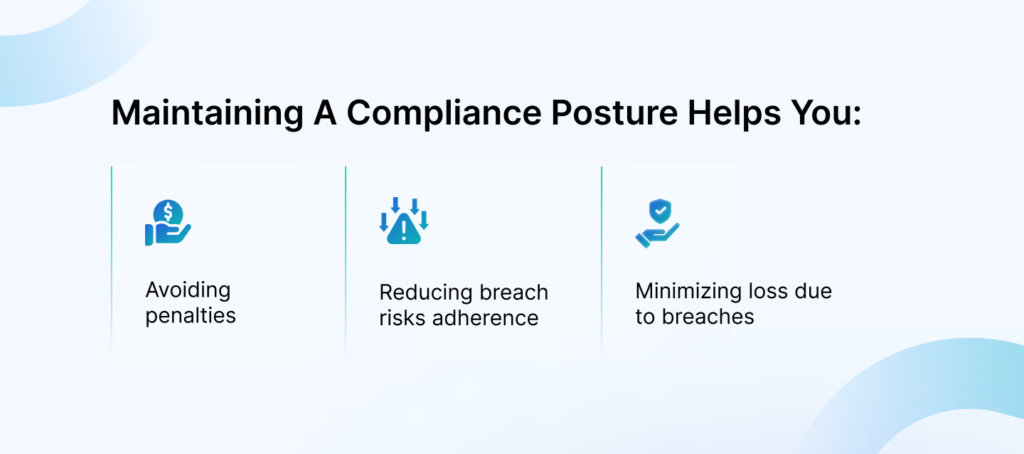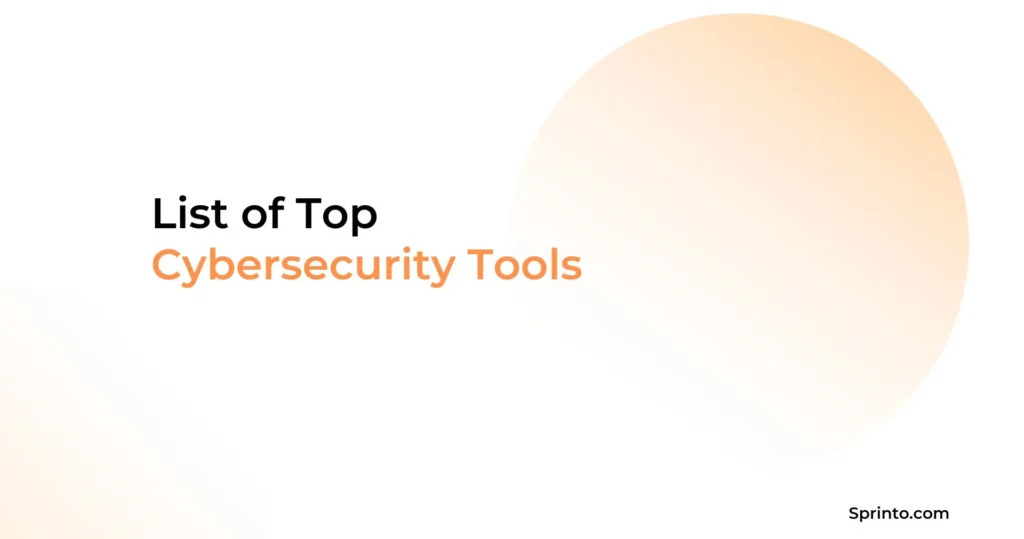Managing compliance posture is like a circus—most parts work in harmony until one day, they just don’t. When one component slips, it doesn’t just stop, it creates a domino effect. Before you know it, you’re putting out fires, giving you less time to spend on business-critical tasks like managing compliance. It is a situation no one wants to be in. But how do you avoid it?
This article explores how to assess your compliance posture, overcome common challenges associated with it, and run end to end compliance activities smoothly.
TL;DR
Compliance posture is the status of adherence to a particular regulatory framework.
To evaluate compliance posture are to evaluate the effectiveness of controls, measure the impact of implementing controls, and measure the status of implementing measures.
Common challenges of maintaining a compliance posture is lack of insight into gaps, streamlining audit management, and monitoring the entire infrastructure.
What is compliance posture?
Compliance posture refers to the effectiveness of controls with respect to how they align with the requirements of a compliance or regulatory framework during an observation period. It measures the effectiveness of controls, the gap between the requirements and current level of adherence, and the performance of controls based on predefined compliance metrics.
Compliance posture is an objective measure of the maturity of your security posture. As your information security program matures, so do the controls and policies. This also indicates how standardized and effective processes are as more data is fed into the system. Maturity also dictates that as data increases, the more sophisticated performance measurement gets.
How to assess your compliance posture?
You can assess the maturity of a compliance posture by tracking the implementation measures, control effectiveness or efficiency, and control impact to quantify its overall performance.
Here is the three step process to access your compliance posture:
Implementation measures
These measures are used to track a number of progress metrics in implementing certain aspects of your security program such as policies, procedures, controls, tools, and more. Some examples of implementation compliance metrics to keep track of are:
- Percentage of critical or sensitive systems that have password policies in place
- Percentage of servers that are configured correctly
- Percentage of encrypted PII (Personally Identifiable Information) or CUI (Controlled Unclassified Information)
When your compliance program has not reached full maturity, the percentage can be lower than 100. As you progress, the value of implementation should be at a cent percent maturity – anything lower, your security controls wont be considered fully implemented.
Effectiveness or efficiency of controls
The efficacy or effectiveness measurement evaluates if the controls are working as intended or meeting the expected outcome.
These measures evaluate two key aspects of security compliance—efficacy addresses the timeliness of the result while effectiveness is concerned with the results.
To calculate the effectiveness, conduct a risk assessment and use its findings to calculate the gap between the requirements and the actual level of compliance. You can use a number of data points based on your objectives or regulatory requirements.
Examples of the effectiveness metric include:
- Percentage of vulnerabilities that have been mitigated using patches
- Number of instances where unauthorized individuals accessed password-protected files and systems, resulting in a security breach
- The percentage of systems components scheduled for regular maintenance
The efficiency and effectiveness measures enable security and IT teams to evaluate the result of existing policies and data sources for continuous monitoring.
These insights can be used to improve the performance of security programs and prioritize corrective actions. For example, if any vulnerability arises due to a failing control, you have to address it to minimize the risk.
Impact of controls
The impact measure evaluates the effect of your security compliance program on critical business operations. Based on your unique goals and objectives, impact measures helps to quantify:
- The financial impact of maintaining a security compliance program on your bottom line in terms of cost saved by minimizing incidents
- The increase in customer trust and brand visibility gained by demonstrating a better compliance posture
- Any other business-critical impacts such as improvements in business operations.
The impact measure works by combining the result of security control implementation and a number of data points from resources such as time saved due to reduced number of incidents. This equips security and IT teams with vital insight that can help them develop and improve their compliance programs.
For example, the percentage of the agency’s information system budget devoted security relies on information regarding the implementation, effectiveness,following NIST SP 800-53 security controls
Benefits of maintaining a compliance posture
Your compliance posture is tied to several growth factors, such as operational efficiency, financial health, and the length of sales cycles.

Avoiding penalties
Depending on the nature of the data you process and the type of service you offer, one or multiple regulatory frameworks may be mandatory.
If you fail to comply with its requirements, you are opening yourself up to the possibility of penalties and legal liabilities. The severity of the reprimands depends on the nature and type of violation. A few examples are:
- If you violate HIPAA, civil penalties from $100 to $50,000 and criminal penalties up to $250,000 apply.
- Non-compliance with NIST 800-53/CSF leads to loss of contract and federal funding
- Fines range from $5,000 to $100,000 a month for not complying with PCI DSS
- Non-compliance with GDPR leads to fines up to €20 million or 4% of annual global turnover, whichever is higher
Reducing breach risks
Security breaches, depending on how sophisticated, can severely impede key operational initiatives. Recovering from breaches and restoring impacted systems may take weeks or even months.
The toll on your operations and engineering bandwidth can be severe to the point that it seriously cripples your ability to achieve goals. A strong compliance posture helps you minimize the chances of a compromise by helping you reduce vulnerabilities and gaps that may escalate into an incident.
Minimizing loss due to breaches
Apart from the loss of bandwidth due to operational disruptions, the financial impact of breaches is evaluated in terms of the cost of tools and loss of customer trust.
Once your systems are compromised, the next step is to take corrective action. This generally involves implementing a suite of incident recovery tools and corrective measures that were not present in the first place to prevent the damage from occurring in the first place.
Secondly, there’s the invisible or indirect cost. Incidents = poor reputation. And loss of reputation = compromised bottom line.
Moreover, a growing number of businesses refuse to sign a contract unless their vendor can demonstrate a strong compliance posture through certifications like ISO 27001 or SOC 2. If you are compliance-certified, you can expand to new markets faster.
Note: Let’s dispel a common myth about compliance. The misconception is that compliance means you’re immune to breaches. While compliance is a crucial piece in the posture puzzle and a factor that adds to resilience, it is technically wrong to conflate the two.
Compliance simply means that you have the right controls and measures in place to minimize the possibility of an incident. It is an enabler rather than a guaranteed shield against incidents.
Challenges of maintaining a compliance posture
Challenges of maintaining a compliance posture include a lack of visibility into the gaps, continuously monitoring every granular component, and checking off every requirement in the audit checklist.
So if you are new to compliance, here’s a heads up – it’s far from a smooth journey. Let’s understand these issues in detail:
Where am I lagging behind?
A common challenge management faces is the lack of comprehensive insight into the key functions of the compliance posture – the overall progress, what’s working, what’s failing, which parts require attention, and new requirements.
Poor or inadequate insight makes compliance posture management somewhat intuitive and disconnected. This leads to unforeseen risks and incorrect decisions around compliance strategy.
The solution to identify gaps lies in risk assessments, which introduces another set of challenges. Unless you assign scores accurately and make decisions that reflect the business context, it becomes an intuitive and assumptive activity.
Meeting audit requirements
For most businesses, compliance is a checklist to meet regulatory obligations or a customer asking to demonstrate a strong posture.
As a result, management tends to see compliance as a cost center and therefore, tackles audit-readiness by allocating resources which can often be disorganized.
While manual compliance may seem to work at first, in the long run, engineering and IT bandwidth becomes stretched thin. Even more so when you are trying to manage multiple audits at once.
“Excel files and offline tools are not scalable for compliance, especially when expanding into new geographies and adhering to multiple frameworks. Continuous evidence maintenance and production are essential, and automation provides a feasible solution that allows engineering teams to focus on product development and feature enhancement.”
Swapnil Tripathi, PCI QSA, ISO LA, and Green belt LSS at Sprinto
Monitoring every component
Continuous monitoring is a critical component of maintaining compliance status. It helps teams identify gaps and remediate them quickly to avoid falling out of compliance.
However, most management teams, in an effort to manage all aspects manually, end up breaking workflows, complicating processes, and eating up bandwidth. A common scenario involves leaving bits of compliance unchecked and focusing only on specific parts at certain times.
Managing compliance sans focus can leave you with compliance blind spots, hidden vulnerabilities, and a sense of rush and panic as the audit deadline gets closer.
How to improve compliance posture and overcome challenges?
Managing bits of infosec compliance requires compiling multiple components into a single system and running them all in harmony. Needless to say, this is easier said than done, especially if you are trying to manage everything by assigning parts to employees and using semi-automated tools.
One way to overcome the challenges while efficiently managing posture is using a compliance management system like Sprinto. The platform automates infosec compliance activities to help you achieve audit-readiness in weeks rather than months.
Sprinto organizes everything compliance-related to help you operate thoughtfully without disrupting engineering bandwidth.
In essence, Sprinto is the ChatGPT to a CISO–it is automated to the extent that human effort is negligible. – Sunil Sarda, Head of Engineering at HubEngage
Sprinto connects with your cloud stack, assesses your environment, and runs continuous, fully automated scans across the infra, code repositories, and apps to evaluate compliance. It builds a centralized view of assets, risks, controls, and compliance health.
Security and compliance teams can quite easily test and align controls against the requirements of any framework. It alerts teams of anomalous behavior or when controls are about to fail so such instances can be remediated on time. Additionally, you get:
- Built-in security training courses with the ability to track progress
- Pre-built and fully customizable policy templates with in-app acknowledgments
- Pre-mapped controls and checks for sweeping compliance coverage
- Customizable risk library to help you scope security risks across your business’s assets and processes
Run a compliance program unique to your organization’s goals with Sprinto. Talk to our experts now.
FAQs
What is the difference between compliance and posture?
Compliance and posture are two sides of the same coin but there are subtle differences. Compliance ensures you meet specific regulatory requirements while posture assesses your overall security readiness and ability to protect against threats.
What are the components of compliance posture?
Some of the components that go into compliance posture include risk management, audit readiness, vulnerability assessment, policy management, evidence collection, control implementation, and continuous monitoring.
What entails good security posture?
Good security posture involves implementing the right measures or controls, continuously monitoring for threats, conducting regular risk assessments, employee training, and ensuring timely incident response.
Anwita
Anwita is a cybersecurity enthusiast and veteran blogger all rolled into one. Her love for everything cybersecurity started her journey into the world compliance. With multiple certifications on cybersecurity under her belt, she aims to simplify complex security related topics for all audiences. She loves to read nonfiction, listen to progressive rock, and watches sitcoms on the weekends.
Explore more
research & insights curated to help you earn a seat at the table.

















